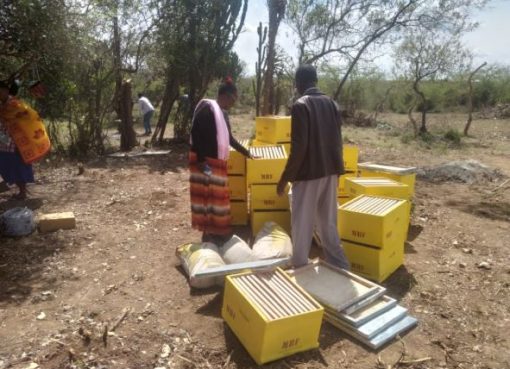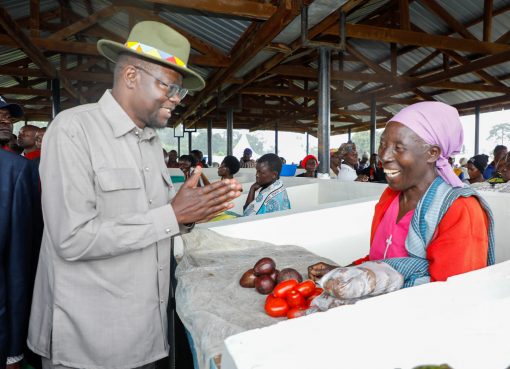
Photo by NicholasNthenge/KNA
Countries were Wednesday challenged to take education as a practical response to management of migration and displacement and an opportunity for those in need of one.
Speakers at the launch of the 2019 Global Education Monitoring (GEM) Report in Nairobi were in agreement that education is a human right and a transformation force for poverty eradication, sustainability and peace.
That people on the move, whether for work or education, whether voluntary or forced, do not leave their education behind.
The GEM report themed “migration, displacement and education, building bridges not walls,” underscores the huge potential and opportunities of ensuring that migrants and displaced persons have access to quality education.
Education Cabinet Secretary Amb. Amina Mohammed who spoke during the regional launch called for inclusion of immigrants without any prejudice, observing that it is important for global cohesion.
The CS however, agreed that inclusion has not been fully achieved despite a commitment to it, observing that refugees may share the host country‘s curriculum, assessment and language of instruction but be only partially included in its geographical separation as in camps in Kenya.
“Education can be a bridge and should always be a key part of response to migration and displacement to avoid creating marginalisation and frustration,” said the CS.
She further called for equitable and predictable psychological social support for teachers to enable them deal with overcrowded, mixed age and multi lingual classrooms.
Mohammed added that education approaches used to support teachers in Kakuma camp range from diploma and certificate courses by a national university.
The CS urged all the participating countries to implement the recommendations in the report, which she said were simple and comprise a clear roadmap for providing an education to those whose livelihoods have been supplanted by conflicts and disasters.
Amina said the Government of Kenya, in collaboration with other partners, had put in place various strategies for addressing the educational needs of displaced and migrant communities.
Some of the strategies include, development of the Nomadic Education Policy that addresses the needs of the nomadic communities through various interventions such establishment of mobile schools, low-cost boarding schools and school feeding programmes.
Others include development of the Education Sector Policy on Disaster Management that guides the response to disasters resulting in displacement, establishment of a functional Working Group on Education in Emergencies and development of the Education Sector Policy on Peace Education.
United Nations Educational, Scientific and Cultural Organization (UNESCO) Assistant Director General for Education Ms.Stefania Gianini echoed related sentiments on the need for migrant inclusive education, stating that it is the only way for renewed hope and a future.
Gianini observed that education was a basic right guaranteed to all and as such more teachers needed to be trained to improve the current status, help build trust and reduce bias and use of force.
“Education is not only a moral obligation but also a practical solution to the many ripples caused by moving populations. It must always be a key in mitigation,” Gianini asserted.
The report documents that aid to education had in 2016 reached the highest level since records began in 2002 compared to 2015 when it grew by $1.5 billion (13 per cent) to reach $13.4 billion.
Aid to education thus accounted for two thirds of the increase, aid to secondary and post-secondary education rose with a lower rate, with the share to basic education in total education aid reaching its highest level of 45 per cent.
It further revealed that aid disbursements were still not allocated to the most in need countries, with the share of basic education aid to low income countries falling from 36 per in 2002 to 22 per cent in 2016.The share to least developed countries was 34 per cent in 2016 down from a 2004 peak of 47 per cent.
The report sought to examine the education impact of migration and displacement across all population movements within and across borders alongside review of progress on education in the 2030 Agenda for Sustainable Development.
UNESCO’s figures reveal that 263 million children, youth and adolescents, aged between 6 and 17 years, are not in school presently and progression through the school system continues to be a significant challenge in many countries.
Additionally, availability of educational facilities and provisions does not equate with ensuring the inclusion of all children in the learning process.
The Cabinet Secretary was flanked by Principal Secretary in the Ministry of Education Science and Technology Dr. Belio Kipsangand Principal Secretary State Department for University Education and ResearchProf. Collette. Suda among other dignitaries.
By Alice Gworo





